In my recent trip to Japan, we visited Kyoto, which was one of the most fascinating places I have ever visited. Kyoto has over 1600 temples and shrines! While visiting the impressive Chionin Temple in Kyoto, and I noticed some interesting little sculptures at the base of several of the shrine altars on the temple grounds.
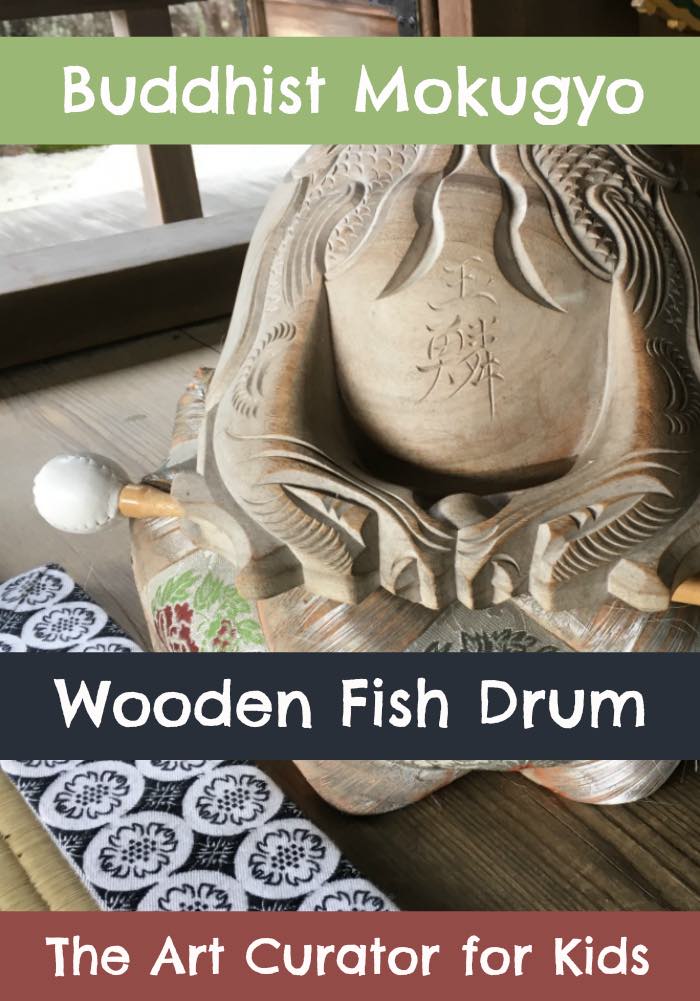
Because all signage was in Japanese, and because I didn’t have data on my phone, I was just left to wonder what they were. I’m excited to research them now and share with you what I have learned. Show these cute sculptures to your children and complete the below learning activities to explore them further!
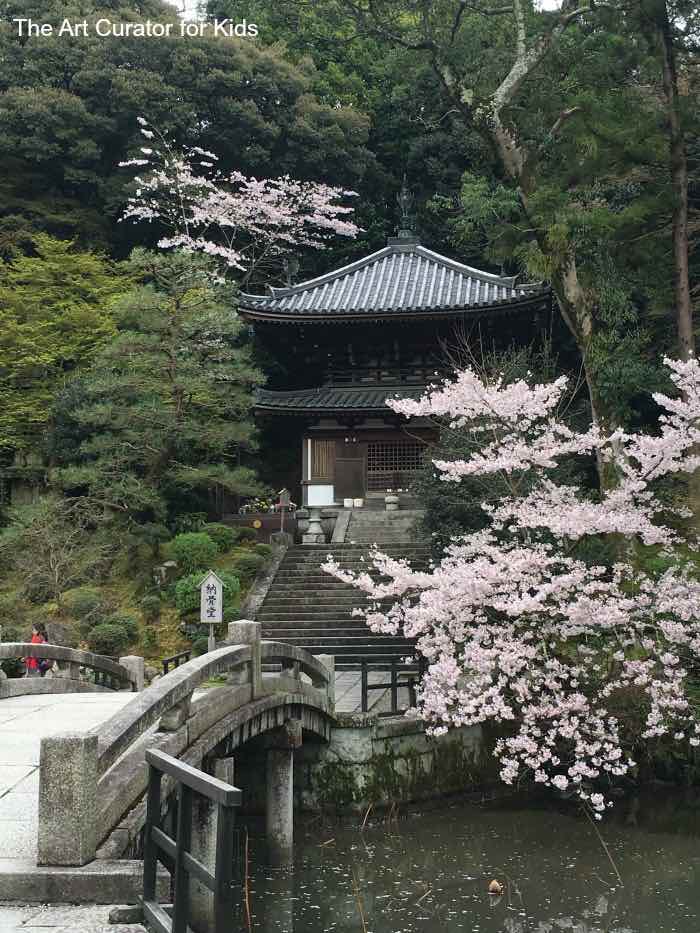
(I’ll be writing more about the temples I visited later. Be sure to sign up to receive posts by e-mail if you’d like to read more about my trip to Japan!)
I first noticed them in the main shrine of Chionin. In front of the altar sat 4 different Mokugyo sitting atop a decorated pillow with a mallet of some sort. I thought maybe the sculptures were holders for gong mallets as I saw many gongs on the temple grounds.
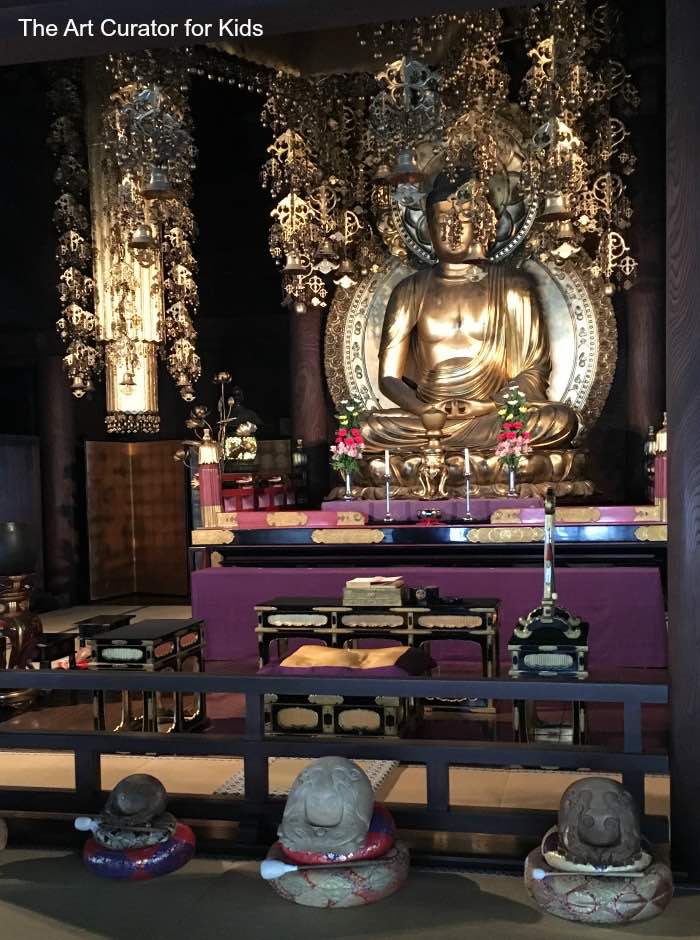
In a smaller shrine amidst a gorgeous cemetery held a small open room with many more of the sculptures without the imagery spread out with woven rope rugs. I was able to walk around them in this room, so I was able to see each has a handle and a notch to hold the mallets.
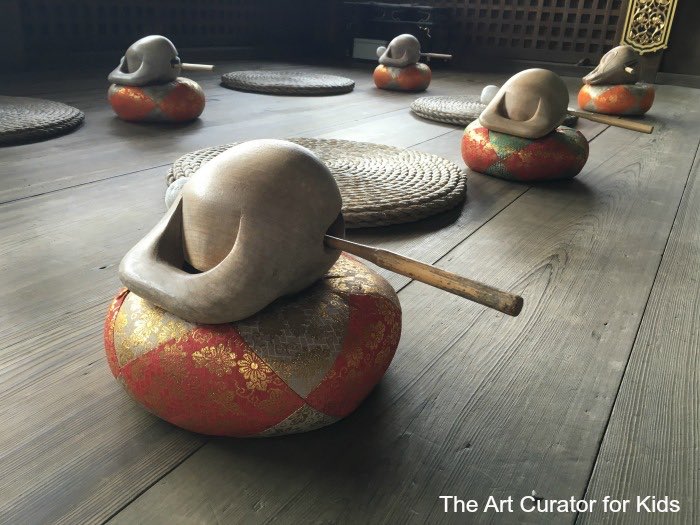
The Mokugyo in the room were more simple without the carved designs, while the ones under the altar depicts an animal or creature. To me, they looked almost like frogs, but they actually represent fish.
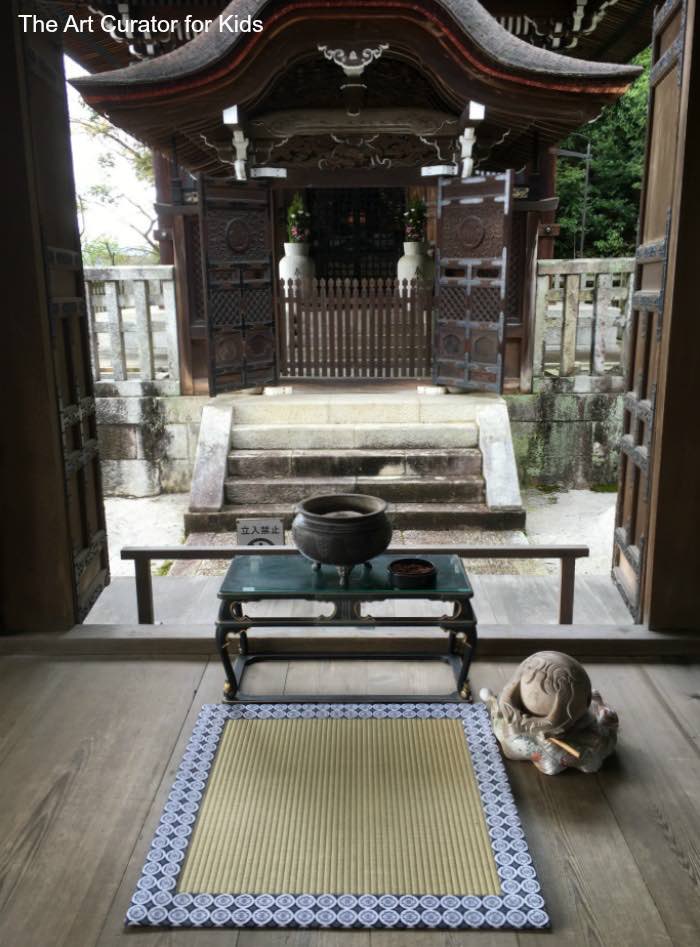
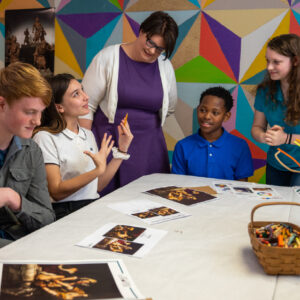
Get the Full Lesson!
This Lesson is in The Curated Connections Library!
Find the full lesson from this post along with hundreds of other art teaching resources and trainings in the Curated Connections Library. Click here for more information about how to join or enter your email below for a free SPARKworks lesson from the membership!
Looking Questions
Before sharing the below information with your children, invite them to speculate on the function of these sculptures from the temple as I had to do on my visit. Ask the below questions of the students.
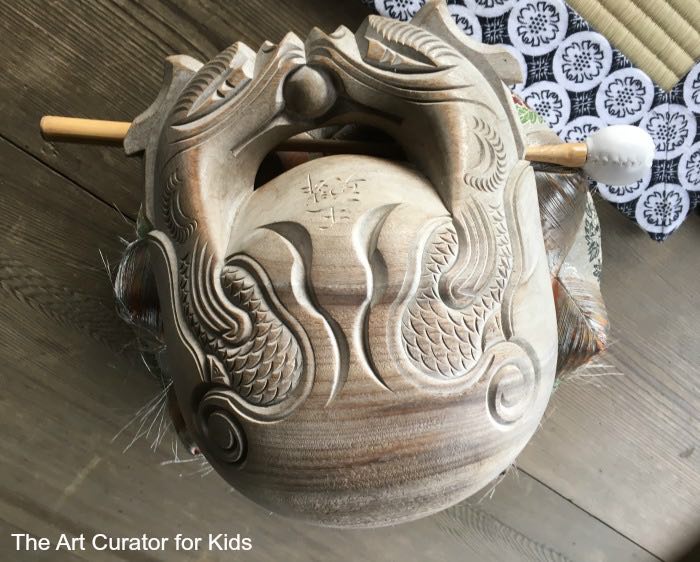
- What do you notice? What do you see that makes you say that?
- What are they made out of? What textures do you notice?
- What images are represented on the sculptures?
- What do you notice about the surroundings?
- For what purpose do you think these sculptures were used?
- Why do you think they used representations of fish? What could fish symbolize?
Art Information
Never did it cross my mind that these sculptures were instruments! I assumed the stick was used for a drum or gong, but I didn’t notice that the sculpture itself was the drum. I feel a little dumb for not figuring that one out!
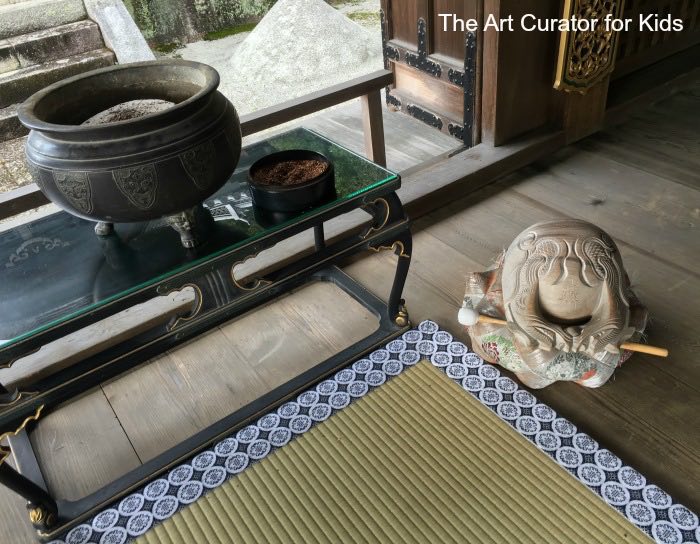
These sculptures are called Mokugyo, Muyu, or wooden fish. These are wooden instruments commonly seen in Japan, China, and Korea. The instrument is used for cadence and accompanies the chanting of the monk. The Buddhist monks chanted sutras which are ancient religious texts and teaching.
Check out the sound the Mokugyo makes in this video. Different size wooden fish make different tones.
The Mokugyo often show two fish coming together with a pearl on the handle connecting their two mouths. According to Wikipedia, the pearl represents unity, and the fish represent wakefulness.
Activity Ideas
After discussing the features and functions of the Mokugyo, use these ideas to further explore these fascinating artworks.
- Use this artwork as a part of a world religions unit on Buddhism. This book is a very well-reviewed collection of Buddhist stories.
- Practice reading sutras to the beat of drums or clapped hands.
- Make your own drums or other musical instruments.
- Study musical instruments from around the world. (See also: Indonesian Sesando)
Stay tuned for more posts about all of the amazing sites and artworks I experienced in Japan! 🙂

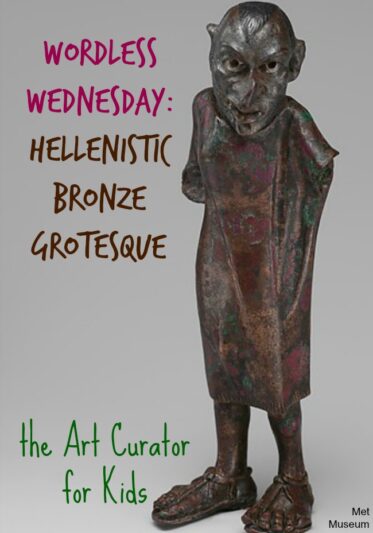
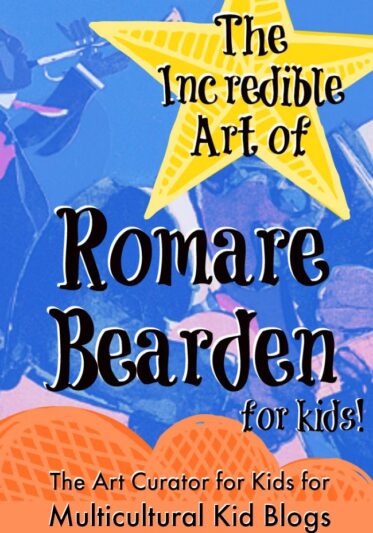
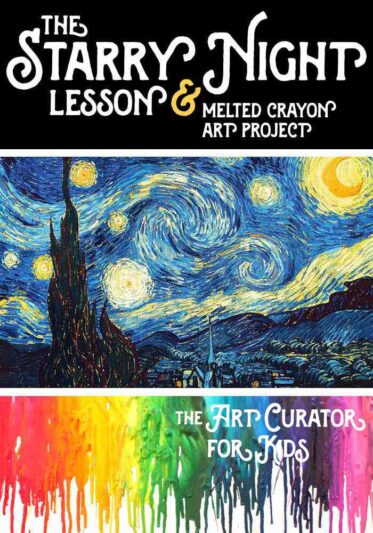

Leave a Comment